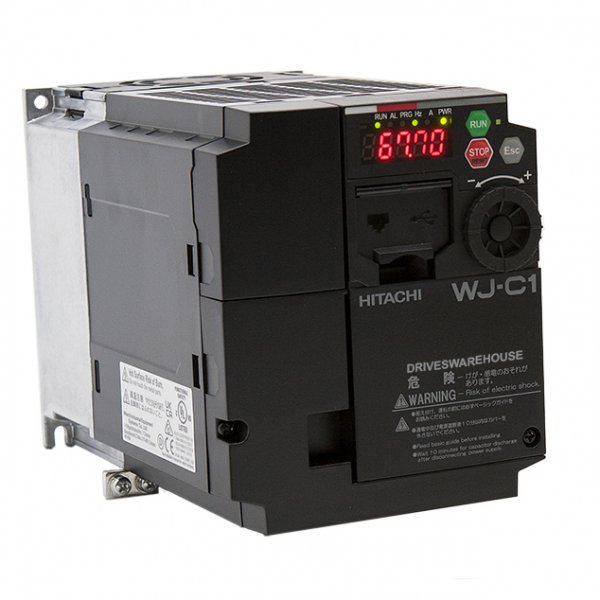- Joined
- Oct 5, 2023
- Messages
- 32
I'm at the planning stage of the VFD conversion for my 5 month old PM1440-2SM and would like to thank Mark @mksj for all his efforts. It is huge help for me.
The good thing is that existing Forward and Reverse contactors have unused NO auxiliary contacts. It would allow me to keep all low voltage circuitry as is. I ordered Hitachi WJ200-022SF and Leeson 3HP motor.
The existing single phase motor appears to be a custom hybrid between metric IEC 90L and 100L. All mounting dimensions are as 90L, but shaft is 28mm as for 100L. And also shaft to mount dimension is 100mm, not 90mm as should be for 90 frame.
The new Leeson motor is 100L and significantly beefier than original, so mounting is going to be a challenge. I was not able to find 3HP, 4 pole motor in 90 frame. I think nobody makes them.
I drafted a preliminary schematic, used low voltage part from the PM manual, and shamelessly photoshoped WJ200 circuitry from one of Mark's many conversion schematics. Still, need to map connections on the terminal strip and create a wire list.
Would appreciate any comments and suggestions.
Thanks Mike
The good thing is that existing Forward and Reverse contactors have unused NO auxiliary contacts. It would allow me to keep all low voltage circuitry as is. I ordered Hitachi WJ200-022SF and Leeson 3HP motor.
The existing single phase motor appears to be a custom hybrid between metric IEC 90L and 100L. All mounting dimensions are as 90L, but shaft is 28mm as for 100L. And also shaft to mount dimension is 100mm, not 90mm as should be for 90 frame.
The new Leeson motor is 100L and significantly beefier than original, so mounting is going to be a challenge. I was not able to find 3HP, 4 pole motor in 90 frame. I think nobody makes them.
I drafted a preliminary schematic, used low voltage part from the PM manual, and shamelessly photoshoped WJ200 circuitry from one of Mark's many conversion schematics. Still, need to map connections on the terminal strip and create a wire list.
Would appreciate any comments and suggestions.
Thanks Mike



